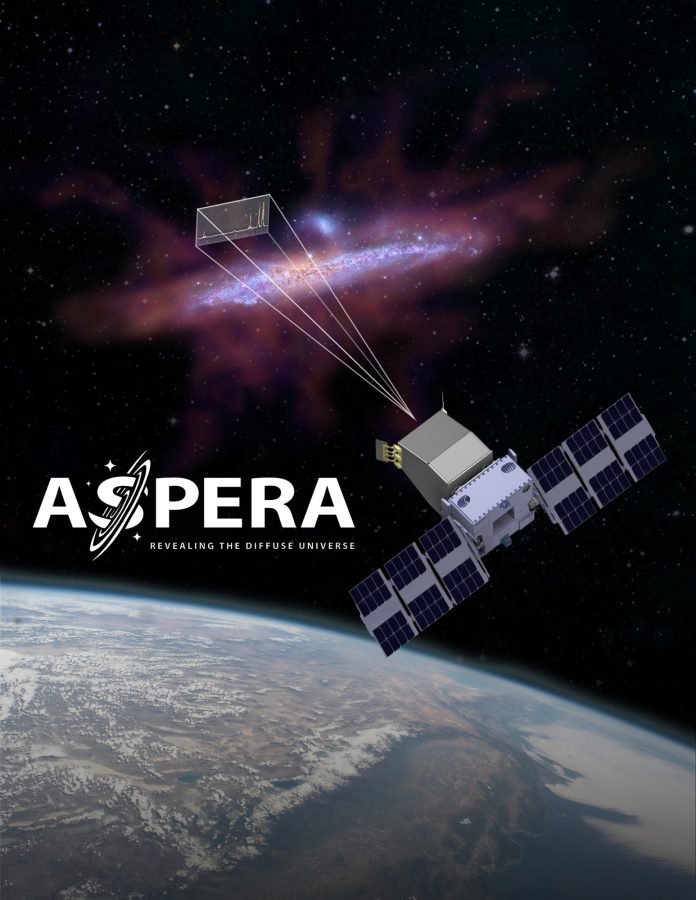The University of Arizona will lead the NASA Aspera mission, which seeks to solve the mystery about the way galaxies form.
The mission will be led by Carlos Vargas, as principal investigator, who is a postdoctoral researcher in the UA’s Steward Observatory. According to Vargas, the Aspera mission will produce the world’s first maps of the mysterious “warm-hot” phase of gas that surrounds galaxies.
This phase contains gas at an estimated 300,000 degrees and accounts for more mass than all of the stars within the parent galaxy. This phase has been extremely difficult to study in the past due to technological limitations, and the need to go into space to observe things in the ultraviolet. Vargas explained that the need to go to space is because the ozone layer of the Earth’s atmosphere blocks ultraviolet photons.
“Understanding how this gas flows in and out of galaxies is crucial for understanding how galaxies evolve over time,” Vargas said via email.
The telescope they are developing works by collecting photons in the far ultraviolet, kind of like a light bucket.
“We will point the telescope at our targets and stare for weeks at a time to collect enough ultraviolet photons to produce maps of the warm-hot phase of gas,” Vargas said.
The biggest challenge they have faced so far has been designing a space telescope on an extremely tight budget. Vargas explained that while $20 million is a lot of money, it’s extremely small when you need to use it to build something that will need to operate in space.
Therefore, Vargas and his team have put a ton of time and effort into making sure Aspera will be possible to build on a tight budget. Vargas also explained that they are ready for any unforeseen challenges.
“The team is extremely adaptable and able to react to whatever may come our way,” Vargas stated.
The most surprising part of this mission so far has been the technological advancements that led to them being able to develop Aspera. Vargas explained that the general consensus in the field was that mapping warm-hot gas in the way they do with Aspera would be impossible for at least another decade.
There had been some recent improvements in ultraviolet technology in the last few years, so Vargas and his team decided to crunch the numbers again a few years ago to see if it would be possible for a small telescope. They were excited to see that it was now possible to build Aspera.
This project is expected to span five years into 2026, according to Vargas. The first phase of the project is a six-month concept study, Vargas and his team will be doing with NASA. Once given the green light, they will move forward with the 12-month “Formulation” phase, where they will finalize the design of the telescope down to each individual nut and bolt, Vargas explained. Lastly, the “Implementation” phase will take over three years. In that phase, Vargas and his team, will build the instrument and deliver it to NASA for launch. Their planned launch date is in November of 2024.
Vargas said that he had always been interested in space and it was those experiences he had when he was younger that led to him going into this research. He had grown up watching Star Trek with his mom. They would always have Star Trek reruns playing when he was a kid.
“I remember wanting to go into space and studying the stars since I was very young. It sort of just stuck ever since,” Vargas said.
Vargas also explained that he was lucky to have a high school physics teacher who went above and beyond in making sure he had access to extra materials.
“We would go to lecture series at the Princeton Plasma Physics Lab and he even helped me sign up for a four-college-credit class at Rutgers when I was in high school,” Vargas said.
Those interests Vargas had in space as a kid have led to him leading this mission which marks a new milestone in the UA’s history of space exploration.
Follow Jillian Bartsch on Twitter









